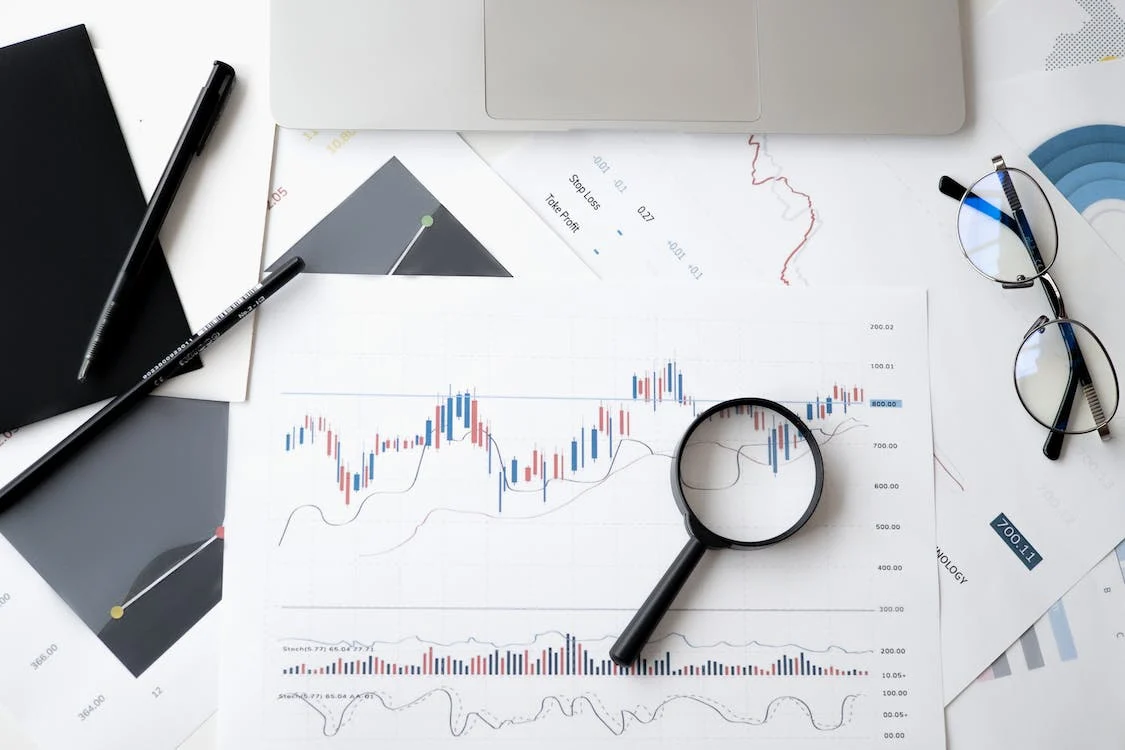AI in HR Analytics
Table of Contents
- Introduction
- Insightful Data Analysis
- Predictive Turnover Analysis
- Identifying Skill Gaps
- Policy Effectiveness
- Challenges and Considerations
- Conclusion
Introduction
Artificial Intelligence (AI) has permeated all sectors, transforming traditional processes and systems. In the realm of Human Resources (HR), AI has ushered in a new era of data-driven insights and decision-making. This article explores the transformative power of AI in HR analytics, particularly in predictive analysis, HR policy effectiveness, and identifying skill gaps. We’ll also discuss the challenges and considerations associated with implementing AI in HR.

Insightful Data Analysis
In the context of HR, data analysis involves processing and interpreting various types of data, including employee performance metrics, satisfaction surveys, and attrition rates. Traditionally, this was a time-consuming process prone to human error. However, the advent of AI has revolutionized how HR data is analyzed.
AI-powered analytics tools can process vast amounts of data rapidly and with high accuracy. These tools can identify patterns and correlations that might not be evident in manual analysis. For instance, AI might detect a correlation between employee engagement levels and factors such as the frequency of team meetings or the proximity of an employee’s residence to the office. Such insights can guide HR teams in shaping strategies that foster a positive work environment and improve employee engagement.
Moreover, AI can automate routine data analysis tasks, freeing up HR personnel to focus on strategic decision-making. Here are a few ways AI enhances data analysis in HR:
- Automates routine data processing tasks, reducing the risk of human error
- Uncovers hidden patterns and correlations in HR data
- Enables real-time tracking of HR metrics, facilitating prompt decision-making
- Provides predictive insights, helping HR teams anticipate future trends
Predictive Turnover Analysis
Employee turnover is a significant concern for organizations. The costs associated with recruiting, on-boarding, and training replacements are substantial. Additionally, high turnover rates can impact team morale and productivity. Therefore, predicting turnover before it occurs can help organizations retain their talent and mitigate these costs.
AI brings predictive capabilities to HR analytics. By analyzing various factors such as job satisfaction, salary, work-life balance, and more, AI can anticipate which employees are likely to leave the organization. This insight enables HR teams to proactively address potential issues, whether it’s initiating discussions about job satisfaction, adjusting work schedules, or negotiating salaries.
Moreover, AI can learn from past data and improve its predictive accuracy over time, making it an invaluable tool for HR. Here are a few ways AI can aid in predictive turnover analysis:
- Analyzing past turnover trends and using that data to predict future turnover rates
- Identifying potential causes of employee dissatisfaction and flagging them for HR
- Proactively flagging employees who show signs of disengagement or burnout
- Learning from past data to improve future predictions

Identifying Skill Gaps
In today’s rapidly changing business landscape, staying ahead of the competition requires organizations to continually upskill their workforce. Identifying skill gaps in the workforce is the first step towards planning for future hiring or training initiatives.
AI can help organizations identify these skill gaps more accurately and efficiently. By analyzing data from performance reviews, job descriptions, training programs, and even industry trends, AI can provide a clear picture of the skills present in the organization and those needed for future success. This not only aids in creating effective training programs but also informs recruitment strategies, ensuring the organization is equipped with the necessary skills to compete effectively.
Here are some ways AI can detect skill gaps:
- Comparing the skills listed in job descriptions with those demonstrated by employees to identify discrepancies
- Analyzing performance reviews for mentions of skills or areas of improvement
- Identifying trending industry skills that are currently lacking in the organization
- Forecasting future skill needs based on industry trends and technological advancements
Policy Effectiveness
HR policies and practices play a pivotal role in shaping the organization’s culture, employee experience, and ultimately, the overall productivity. Therefore, assessing the effectiveness of these policies is vital for any organization.
AI has the potential to transform how organizations evaluate their HR policies. By analyzing various data points, AI can provide insights into how well a policy is working. For example, by analyzing turnover rates before and after a new policy implementation, or by correlating employee engagement survey results with specific policies, AI can give HR teams a clearer understanding of their policies’ impact.
Furthermore, AI can provide actionable recommendations for policy adjustments based on these insights. For instance, if AI analysis reveals that a flexible working hours policy leads to increased employee satisfaction and productivity, the organization might consider expanding this policy. Similarly, if a certain training program doesn’t lead to significant improvements in performance, the organization might need to revise the program or explore alternative training methods.
Here are some key ways AI can measure policy effectiveness:
- Comparing various HR metrics before and after policy implementation
- Correlating the results of employee surveys with policy changes
- Using sentiment analysis on employee feedback to gauge reaction to policies
- Providing actionable recommendations for policy adjustments based on data analysis

Challenges and Considerations
While the advantages of integrating AI into HR analytics are significant, it’s crucial to also consider the potential challenges. First and foremost, the accuracy of AI’s insights is dependent on the quality of data it analyzes. Ensuring data accuracy and consistency can be a challenging task for organizations.
Additionally, while AI can automate many tasks, it doesn’t entirely replace the need for human judgment. For example, AI may identify potential turnover risks, but it requires a human touch to address the underlying issues effectively. Balancing AI-driven insights with human judgment is essential.
There are also ethical considerations. AI systems must be transparent, fair, and respect privacy. For instance, when using AI for predictive turnover analysis, it’s vital to ensure that predictions are not based on discriminatory factors. Similarly, when using AI to analyze employee feedback, maintaining anonymity and respecting privacy is paramount.
Here are a few challenges and considerations when implementing AI in HR analytics:
- Ensuring data accuracy and consistency for reliable AI insights
- Balancing AI automation with the need for human judgment
- Adhering to ethical standards, including transparency, fairness, and privacy
- Overcoming resistance to change within the organization
Conclusion
Artificial Intelligence is revolutionizing HR analytics, providing unprecedented insights and predictive capabilities. From insightful data analysis and predictive turnover analysis to identifying skill gaps and assessing policy effectiveness, AI is reshaping the HR landscape.
However, as with all technologies, it’s vital for organizations to balance the benefits with potential challenges. Ensuring data accuracy, maintaining the human touch in HR processes, and adhering to ethical standards are critical considerations.
In conclusion, while AI is a powerful tool for HR analytics, its successful implementation requires thoughtful planning and consideration. It’s not about replacing the human element in HR; rather, it’s about enhancing it with data-driven insights to make more informed, strategic decisions.



This site is my inspiration , rattling great design and perfect subject matter.
Your point of view caught my eye and was very interesting. Thanks. I have a question for you.
I don’t think the title of your article matches the content lol. Just kidding, mainly because I had some doubts after reading the article.
Your point of view caught my eye and was very interesting. Thanks. I have a question for you.
Thanks for sharing. I read many of your blog posts, cool, your blog is very good.
Thank you for your sharing. I am worried that I lack creative ideas. It is your article that makes me full of hope. Thank you. But, I have a question, can you help me?
Your article helped me a lot, is there any more related content? Thanks!
Thanks for sharing. I read many of your blog posts, cool, your blog is very good.
Your point of view caught my eye and was very interesting. Thanks. I have a question for you.
Your point of view caught my eye and was very interesting. Thanks. I have a question for you.
Thank you for your sharing. I am worried that I lack creative ideas. It is your article that makes me full of hope. Thank you. But, I have a question, can you help me?
Thanks for sharing. I read many of your blog posts, cool, your blog is very good.
Thanks for sharing. I read many of your blog posts, cool, your blog is very good.
Thank you, your article surprised me, there is such an excellent point of view. Thank you for sharing, I learned a lot.
Your point of view caught my eye and was very interesting. Thanks. I have a question for you.
Saved as a favorite, I really like your blog!
Your point of view caught my eye and was very interesting. Thanks. I have a question for you.